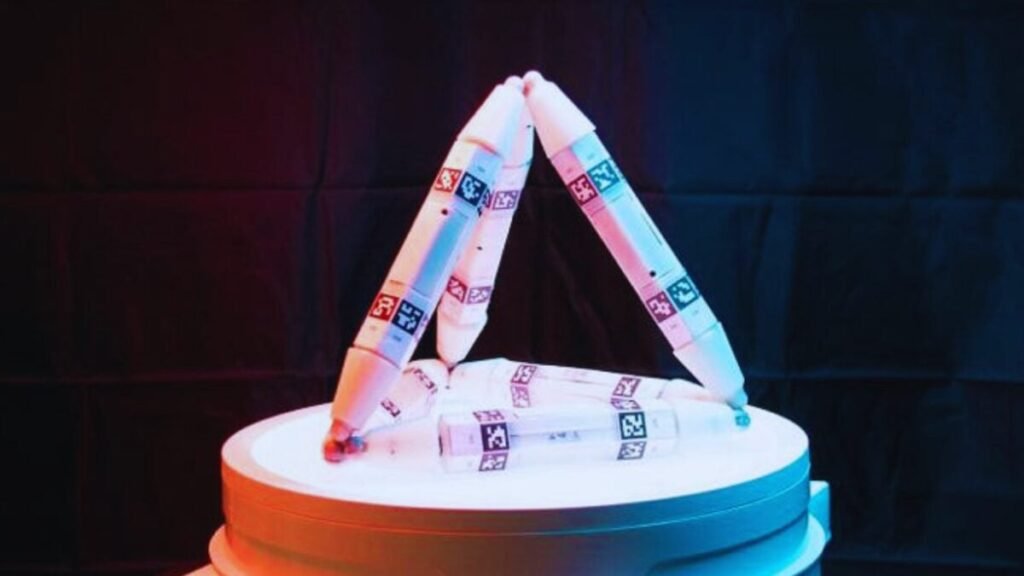A novel life form? The autonomous robot capable of self-repair and evolution through cannibalism.

Until now, discussions about robotics have been centered around machines confined to predetermined instructions and structures. However, a groundbreaking innovation has emerged in the field, revolutionizing the traditional concept of robots. This new breed of robot is not only capable of thinking and moving, but it also embodies a realm where machines exhibit behaviors akin to living organisms.
Truss Link: the robot that reinvents itself with other bodies
Manufactured using magnetic rods and engineered to dynamically alter its shape, Truss Link can seamlessly transition from a two-dimensional structure to a three-dimensional one within seconds. Yet, the most captivating feature lies not in its physical design, but in its capability to “consume” other robots to either grow or repair itself. By identifying adjacent components – whether functional or obsolete – Truss Link discards the redundant ones, thereby enhancing its maneuverability and stability. In a recorded experiment conducted by its developers, Truss Link appended a segment resembling a leg, resulting in a 50% increase in its speed. For researchers, this marks the inaugural practical realization of what they term as “robotic symbiosis.”
More than machines: a new body for artificial intelligence
According to Philippe Martin Wyder, the principal investigator of the project, genuine autonomy in robots transcends mere decision-making; it also encompasses adaptability. In this context, Truss Link transcends being solely a robot; it represents an adaptable framework that serves as a conduit between artificial intelligence and the physical realm. By possessing a malleable physique, AI can engage more efficiently with fluid or uncharted environments. The prospective applications extend to marine exploration, space expeditions, perilous rescue missions, and temporary infrastructure construction. The pivotal aspect lies in the technology’s capacity to enable intelligent systems to alter their structure autonomously, fundamentally reshaping our comprehension of robotics.
A new era of living machines?
Truss Link, with its mutable bodies, heralds a paradigm shift: robots are no longer relegated to being mere instruments but rather entities capable of self-directed evolution. According to experts at Columbia University, this development paves the way for a future where machines not only cogitate but also perceive their physical form, adapt, and metamorphose. As Wyder articulated: “This imbues AI with agency, as well as a sense of creativity in motion.” In this fusion of rationale and corporeality, a new era of robotics is on the horizon.





